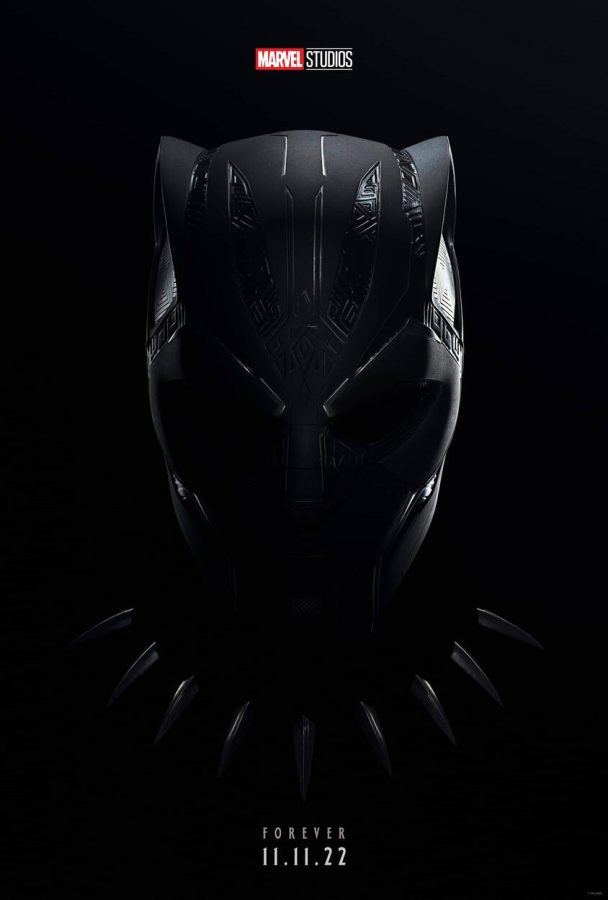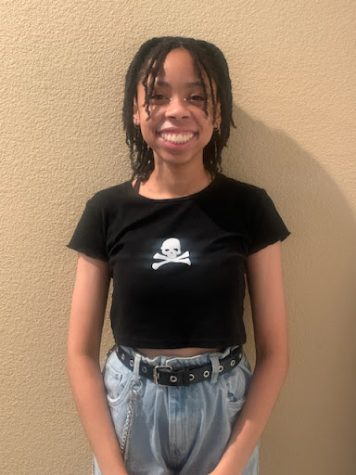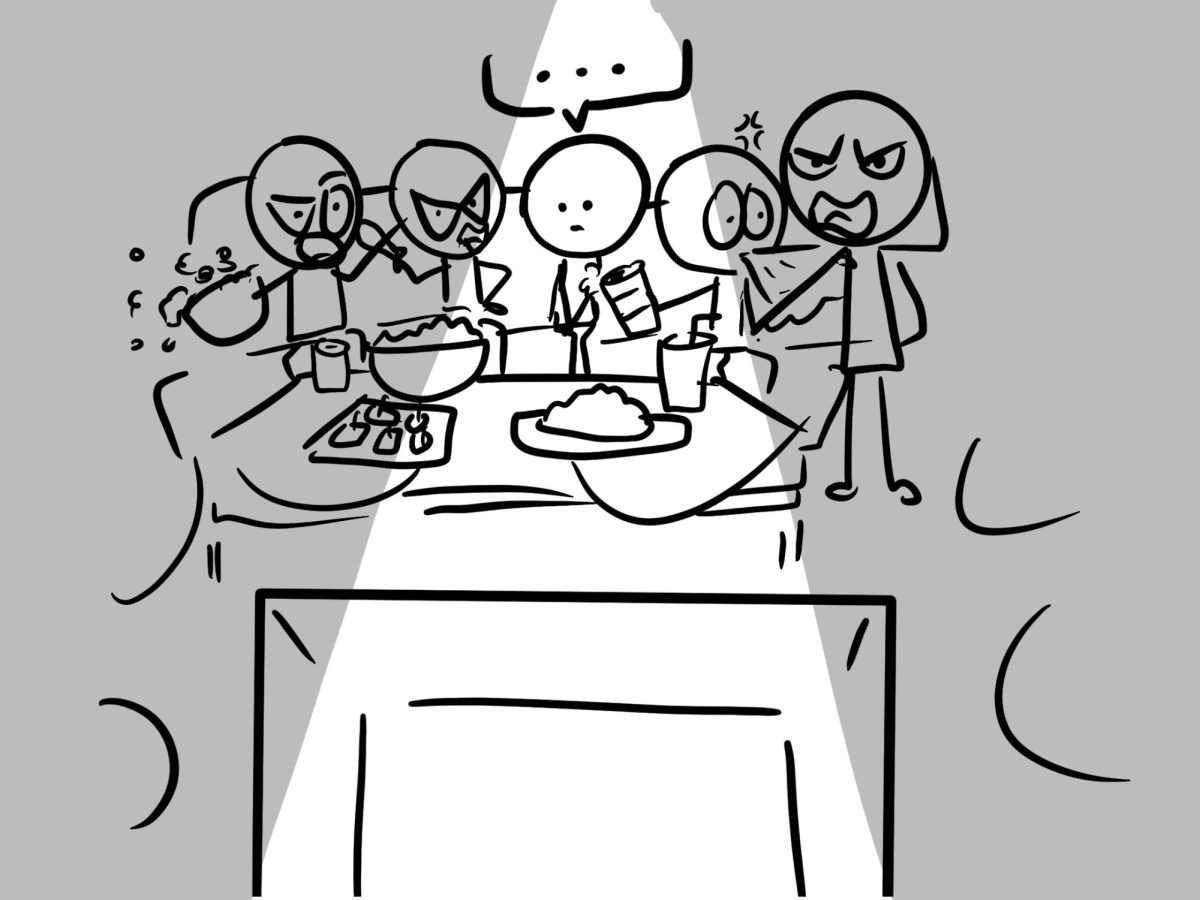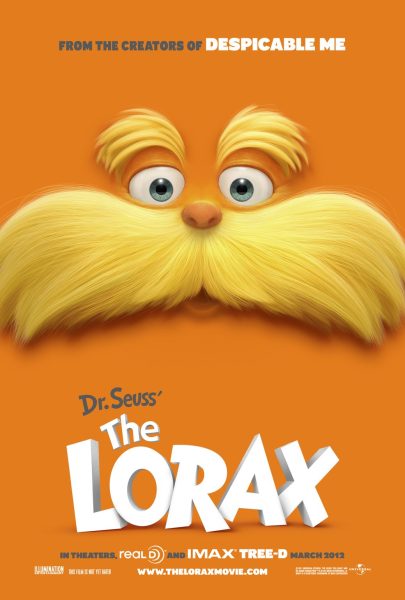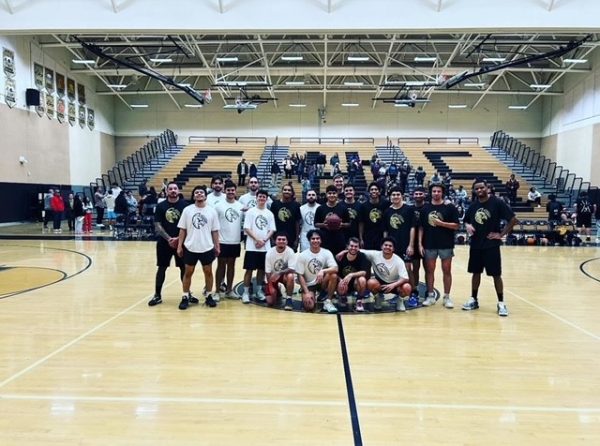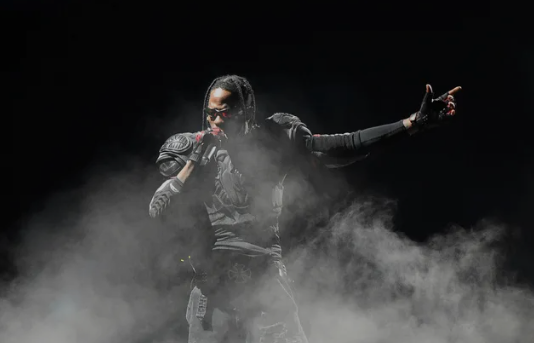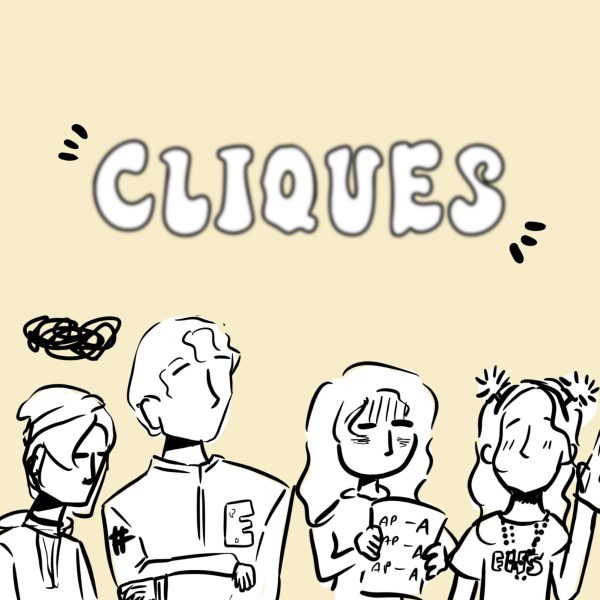The Black Panther films and their significance
Exploring the impact of the most signifcant black superhero
November 23, 2022
Spoilers in this article
With the release of Black Panther: Wakanda Forever I think it’s only fair to acknowledge the impact this film series has had on the world. The camaraderie and joy they’ve created is something truly unique. Whether you like the films or not, you have to admit that their everlasting presence on media will always be remembered.
Directed by Ryan Coogler, Black Panther was released on February 16th, 2018. Written by the brilliant minds of Ryan Coogler and Joe Robert Cole, Marvel Studios’ expanded on the main protagonist, T’Challa, after his first appearance in the MCU in Captain America: Civil War. ‘Black Panther’ follows T’Challa returning home after the events of Civil War including the death of his father, King T’Chaka. T’Challa must now take the throne as the rightful king of Wakanda, an isolated, technologically advanced African nation. However, things take a turn for him as both King and the Black Panther when he is forced to face conflict that puts the fate of Wakanda and the entire world at risk. Secrets, treachery, and danger are obstacles T’Challa must face in order to rally his team and release the full potential of the Black Panther. This is crucial to defeat his foes and secure the safety of his people and their way of life.
This movie received an abundance of praise from the world. It grossed over $1.3 billion worldwide during 2018 and was nominated for seven awards at the 91st Academy Awards, winning three and receiving other awards as well. From the costuming, soundtrack, visuals, and culture, Black Panther had completely reiterated that black actors and actresses, directors, writers, stylists, etc. deserve a seat at the table to create. Rarely do you see such a big budget superhero movie that showcases a black hero as the main character and a majority black cast.
The combination of Black and African culture was the representation that many in the black community cherished deeply and it created a sense of family that the community needed. Sometimes it can be hard for us to connect to our roots because we were stripped from our ancestors and their culture. Seeing these movies helped rejoice that pride. We had so much to be proud of.
According to a New York Times article about the Afrofuturistic designs of ‘Black Panther’, Ruth E. Carter, the costume designer for the film, wanted to create a futuristic African alternate reality made up of diverse tribes with costuming and designs without the influence of the Dutch, the British and other colonizers. She pulled inspiration and authenticness from African tribes and countries. For instance, the traditional hat women in Zulu wear to signify marriage was used as a model for Queen Ramonda’s crown. W’kabi, leader of a border tribe, was wrapped in the Wakandan version of a Basotho blanket. The vibrant colors, patterns, and pieces help show what a powerful and beautiful nation Wakanda is.
The film does a great job at showing the opposite sides of the Black experience and how your background defines who you are. Anthropology of Black Panther has a great article that helps explain this. For one, Wakanda is a nation that embraces its culture and is without the harmful colonists ideologies and trauma. Therefore, T’Challa grew up immersed in his culture. He represents the African identity that is powerful and strong. In contrast, Killmonger, the antagonist of the film, is from Oakland, California. He is the product of alienation, corruption, and colonialism. He represents the African American identity that was negatively affected by all of them and had no choice but to adapt and create his own culture. I think a lot of African Americans can relate to this. This is also seen in their motives. Killmonger is all about overthrowing their oppressors and arming Wakanda to fight against corruption and colonialism, while making Wakanda the head nation of the world. He wants the world to know that Wakanda and black people are here and not going to back down. T’Challa wants to keep his people safe and if that means letting the world think Wakanda is a third world country, then so be it.
The soundtrack also has quite the impact on how music can represent one’s identity and background. T’Challa and Killmonger’s identities can be seen through their music. T’Challa’s music is influenced by traditional African sounds and songs with afro futuristic elements. Killmonger’s music is influenced by hip-hop and rap. This makes sense since T’Challa grew up in an African nation while Killmonger grew up in Oakland where there is more of an influence of African American artists. Thanks to the creative minds Ludwig Göransson and Kendrick Lamar this soundtrack is filled with an original score composed by Göransson and original songs performed or curated by Lamar. NPR notes that the soundtrack in its entirety is filled with amazing artists from Zulu of South African, Sacramento, California and the Bay Area, South of the U.S., Britain, Toronto, etc. which results in the production of a variety of music from R&B, pop, trap, to UK soul, international hip hip and South African gqom. The diversity in the soundtrack is what creates a sense of unity and camaraderie and is even seen as Pan-African in a way.
One last thing that I would like to point out is the women empowerment showcased in this film. Black Panther doesn’t shy away from highlighting the amazing women in the cast. We were introduced to characters like Princess Shuri, technological genius and chief science officer for Wakanda, Nakia, one of the most accomplished espionage agents in Wakanda, and Queen Ramonda, the powerful and just ruler of Wakanda. And of course the iconic Dora Milaje, an elite group of warriors who serve as the all-female special force for Wakanda led by Okoye, the general of the Dora Milaje. Black women, especially dark-skinned black women, are often not represented in the media the way they should be. Seeing all of these women play such different but important roles in the movie with absolute grace and power is so inspiring.
It’s clear to say that Black Panther was a major success. Nothing was more powerful than walking out of the theater while Kendrick Lamar and SZA’s “All the Stars” played in the background. The movie empowered the black community and showed us that we’re capable of being great. Nothing will ever top how we felt in that moment and everyone couldn’t wait to see what was next for our hero, our king, our Black Panther, T’Challa played by the amazing Chadwick Boseman.
However, the world stopped on August 28th, 2020. Going onto social media and seeing “RIP Chadwick Boseman” was the common theme that day and it was truly heartbreaking. It was announced that Boseman had passed away after battling stage four colon cancer for four years. It came as a shock to everyone because only a few people close to Boseman knew about his cancer. Boseman continued to pursue his acting career even after his diagnosis. Films like Marshall, DA 5 Bloods, August WIlson’s Ma Rainey’s Black Bottom and others, were created during and between his surgeries and chemotherapy. We had lost a talented, intelligent man who was the epitome of black excellence and pure skill. The man who played black icons like Jackie Robinson, James Brown, and Thurgood Marshall in past movies. He impacted so many young black children around the world by being a superhero that looked liked them. He was a hero to the black community and continuously gave back. He donated time to work with several cancer foundations, donated $10,000 to the Boys and Girls Club, helped get Black school students to see Black Panther, and returned back to his HBCU, Howard University, to deliver an inspirational Commencement Speech to the class of 2018. He was an activist who advocated for racial justice and equality. One of his memorable moments was his acceptance speech at the 2019 Screen Actors Guild Awards for Outstanding Performance by a cast in a motion picture: “To be young, gifted, and Black, we all know what it’s like to be told that there is not a place for you to be featured. Yet, you are young, gifted, and Black. We know what it’s like to be told to say there is not a screen for you to be featured on, a stage for you to be featured on. We know what it’s like to be a tail and not the head. We know what it’s like to be beneath and not above. And that is what we went to work with everyday because we knew, not that we would be around during awards season and that it would make a billion dollars, but we knew that we had something special that we wanted to give the world. That we could be full human beings in the roles that we were playing. That we could create a world that exemplified a world that we wanted to see.” Boseman was truly an inspiration. The question that rose after his death was how do we continue on without him? How can we keep his legacy alive? Well the answer is here.
The Black Panther sequel, Black Panther: Wakanda Forever, takes place years after the first, directed and written by Ryan Coogler. It was released on November 11th, 2022, and follows the death of King T’Challa. The nation is in a period of mourning and work to continue on without him. Queen Ramonda, M’Baku, Shuri, Okoye and the Dora Milaje are suddenly forced to fight to protect their nation from intervening world powers in the wake of T’Challa’s death. As the Wakandans strive to embrace their next chapter, the heroes must band together with the help of War Dog Nakia and Everett Ross and forge a new path for the kingdom of Wakanda.
This movie tackles grief and mourning well while simultaneously working to get the audience and characters to continue going forward. With the passing of Chadwick, there was plenty of speculation and theories over whether the role of T’Challa was going to be recast. But this film made it clear that they are moving into a new era and we need to say farewell to T’Challa’s character. We get to see the beauty of Wakanda once more and get introduced to another wonderful culture with rich elements down to the smallest detail. There is also a new antagonist on the horizon who sees the world in a different light than those in Wakanda and that causes some conflict. Overall, Black Panther: Wakanda Forever did well in the domestic box office during its debut, earning $180 million over the first weekend.
The antagonist in this film is Namor, a Talokanil-mutation hybrid who rules over the underwater kingdom of Talokan as K’uk’ulkan. The people of Talokan survive underwater and have vibranium in their anatomy and biology making them very powerful. Namor is determined to protect his people from the surface and keep them hidden. Being born in 1571, Namor had witnessed Spanish conquistadors invading Mesoamerica and terrorizing his people by torturing, killing, and infecting. Therefore, he doesn’t take too kindly to those above the surface. When he and his people learned about a vibranium-detecting machine they are quick to destroy it and everybody involved to keep their identities concealed. This is where the conflict starts. Namor is willing to wage war on the surface world to keep his people safe. I think it’s important to point out that Namor’s character and motives make sense. After witnessing the terrible events of history in the world it’s obvious that he feels he has no other choice but to result in war to protect his nation. He had already seen it fall to colonization before and now that people are trying to find vibranium he doesn’t want to risk it happening again. His actions are a result of his past.
Black Panther: Wakanda Forever draws inspiration from Mesoamerica, a historic region spanning modern-day Mexico, Guatemala, Honduras, Belize, El Salvador, Nicaragua, and Costa Rica. Taokan, the underwater city, is explored when Namor takes Shuri down to the city and it’s absolutely beautiful. You can really see the inspiration of Mesoamerican elements in the buildings and other aspects of the city. Mesoamerican Indigenous groups including the Maya, the Olmec, The Aztecs, and the Toltec were also kept in mind when designing Namor and Talokan. When it came to attire, Ruth E. Carter, the designer for the first Black Panther film, talked about how they were inspired by the Mayan Vase database. The Mayans created their own stories on their pottery. They had sheer fabrics, jade, ear spools, and other elements in the culture shown. With this knowledge and understanding, Carter and her team were able to create the clothing of the Talokan people. Then her team added aquatic elements to stay true to the underwater feel of the civilization. Carter and her team did a phenomenal job at highlighting Mesoamerican culture. I feel like this film opened my eyes to just how lively and gorgeous each detail and element is. The representation shown is crucial and I can only imagine how proud people with Mesoamerican descent felt seeing their culture on the big screen.
One of the most powerful scenes in the movie is at the beginning. The film opens with Shuri in her lab trying to do everything in her power to save her brother as she’s aware of T’Challa’s failing health status. Unfortunately, her mother, Queen Ramonda, comes into the lab to give Shuri the news that her brother has passed on. We then get to see T’Challa’s funeral. Everyone, including the royals, elders, and Dora Milaje, are wearing white. T’Challa’s casket is carried through the capital city as people are dancing on the side lines to celebrate the King’s life. In the end, they send his casket up into a royal talon flier and it flies away. The movie cuts to Marvel’s typical movie intro but instead of past MCU movie moments fluttering through the Marvel logo it’s a montage of Boseman as the Black Panther in past movies. The montage had no music, just a subtle wind-like sound as the moments flick by. Something about the silence made this so much more impactful. The audience was so quiet you could hear a pin drop. Everyone could understand the emotion and pain the montage conveyed. It hits you right in the chest and you feel it deep in your soul. No one could ever doubt the mark Boseman left on the world.
As the movie progresses you see the character processes grief differently. Queen Ramonda, for instance, has to be strong because of her position as Queen. But, she mourns for her son and feels the pain of losing both her husband and now son. It hurts her, but as wise and mature as she is, she is able to get through it, even burning her funeral garments in order to bring the mourning period to an end. Nakia lost her other half, the love of her life. T’Challa and Nakia had created a beautiful relationship over the years and to have him ripped away from her hurts her a lot. She was not present for his funeral but that doesn’t mean she didn’t feel intense pain. Lastly, Okoye who has served as the general of the Dora Milaje and T’Challa’s right hand. She makes it clear that she will protect the queen and princess now with all her being. She lost someone very close to her and it does affect her.
One person who had to deal with grief the hard way was Shuri. Unlike everybody else, she detaches herself from her brother’s passing and avoids the feeling that comes with the loss. In a way she blames herself for not being able to save him. We know Shuri is really struggling to forgive herself and move forward because when her mother suggests she burn her funeral garments to end the mourning process Shuri waves it off not believing she has any spiritual closure like her mom. Soon these bottle up emotions turn into full-blown anger and vengeance especially after the death of her mother. She had to watch as Okoye tried to save Queen Ramonda after being drowned by Namor when Shuri refused to ally with him to wage war on the surface world. Shuri had officially lost everyone and any last shred of composure crumbled into pieces. She became consumed with hate and was willing to do anything to seek revenge on Namor and his people. When preparing for battle Shuri is able to become the new Black Panther and when she fights Namor she has the intent to kill. But in the last second she spares his life, after seeing a vision of her mother she realizes that she has become something unrecognizable. In that single act, we see Shuri grow. Unfortunately, she didn’t get the chance to have a normal upcoming; being forced to come to terms with losing everybody. But in that act of mercy, we all know that Shuri is a new person and more than capable of carrying on her brother’s legacy as Black Panther and ruler.
Another powerful scene is the last scene when Shuri visits Naika in Haiti. While there she takes time to sit on the beach and burn her funeral garments. When she does, she closes her eyes, and reminisces on the great times she had with T’Challa. As the moments flash by we once again hear nothing but a subtle wind-like sound. This moment was even more emotional than at the beginning of the film. After everything Shuri went through, seeing her at peace is tear jerking, especially as she smiles and tears up at the memories. Once again you feel the emotions through the screen. The scene seems so simple but so powerful. It was a great way to say goodbye to T’Challa. And in the grand surprise, the post-credit scene reveals that Nakia and T’Challa had a son. They prepared for his death and decided it would be best for them not to attend his funeral. So instead Nakia and their son had a small funeral for him in Haiti. Their son’s Haitian name is Toussaint and his Wakandan name is T’Challa, named after his father. It’s good to know that T’Challa legacy lives on and now Shuri isn’t completely alone anymore.
Lastly, this movie has a different tone and vibe from the production of the first soundtrack. In a variety interview, it was confirmed Director Ryan Coogler and composer Ludwig Göransson were the soundtrack’s guiding force. They talked about how “Lift Me Up” sung by Rihanna was meant to serve as a tribute to the life and legacy of Boseman and was co-written by Nigerian singer-songwriter Tems. Mexican artists, with Latin trap and Mexican folk influences, in addition to South African Amapiano, Afrobeats and hints of reggae made this soundtrack diverse and built a connection with listeners. Göransson talked about how he traveled to Mesoamerican regions and consulted musical archaeologists and spent two weeks in Mexico City collaborating with Mexican musicians, and auditioning hundreds of ancient instruments. Göransson estimated that 250 musicians and singers were involved in the making of the soundtrack. A few artists that worked on the tracks were Rapper Mare Advertencia Lirika and Vivir Quintana’s with the song “Árboles Bajo El Mar” which fills the sonic space of the character’s birth sequence with breathy, elongated vibratos that end with a whisper hymn that builds up into a chant. And Rapper Pat Boy rapping entirely in Mayan on “Laayli’ kuxa’ano’one,” while lilting synths sweep through much of the record. Also Nigerian singer-songwriter Ckay and PinkPantheress sharing a sultry duet on “Anya Mmiri” over a melodious Afrobeats tune recorded in lagos with the help of producer P.Priime.
With everything that’s happened in the past few years, Black Panther: Wakanda Forever gave fans a sense of closure and reassurance. The loss of Chadwick hit people, especially the black community, really hard and these movies served as a way for us to say goodbye. This was a movie that made you really feel something deep, and maybe shed some tears. It also shows how important representation is. The influence of African and Latin American cultures gives people who are a part of those communities something to be proud of. Everyone’s cultures are so beautiful and should be celebrated.

